"My uncle retrained as a clown and a knife thrower," Nathalie Marquez Courtney says matter-of-factly. I'm only sorry our coffees haven't arrived yet, so that I could see if our waiter would possibly drop them with a crash on the floor while overhearing this gem.
Neither of the other two people in the conversation, Swedish-born Henrik Gard nor Jenny Higgins, react to this startling line. That's because circus is also a part of their lives, and it is what brought them on a trip to Gaza last autumn to run a circus school for a week and put on a show.
The circus is quite literally in Marquez Courtney’s blood: she was born into it. “I grew up in a travelling, traditional, Irish circus: Courtney’s,” she says. “It’s now called Circus Vegas, and they travel around Ireland and the UK.”
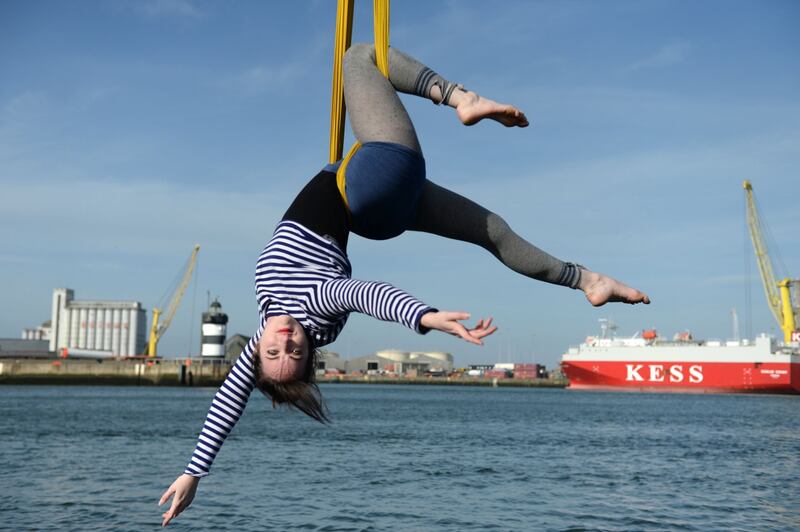
Their circus came about because of the decline of the traditional roving fit-up theatres. “My mother’s family come from a long line of travelling theatre. When Mum was a teenager, travelling theatre was dying in Ireland, so they all decided to open a circus and retrain.” Hence the actor uncle, who turned clown and knife-thrower.
“The maternal side of my family all ran and operated circus. You have a management unit that stays in the country, and then there are the artists who take different contracts with different circuses each year. That’s how my mum and dad met.”
Trapeze as a child
Marquez Courtney’s father Carlos is Mexican. “His family had been trapeze artists for as far back as they could remember. In the 1970s, they were booked by my mum’s family as the one, fancy, international act they could afford in Ireland that year.”
After Carol, the Irish circus woman, and the Mexican trapeze artist got together, they partnered professionally too. “My mum learned trapeze at the age of 22, which is very late. They travelled all around Europe together, then went back to Mexico, and that’s where I was born.”
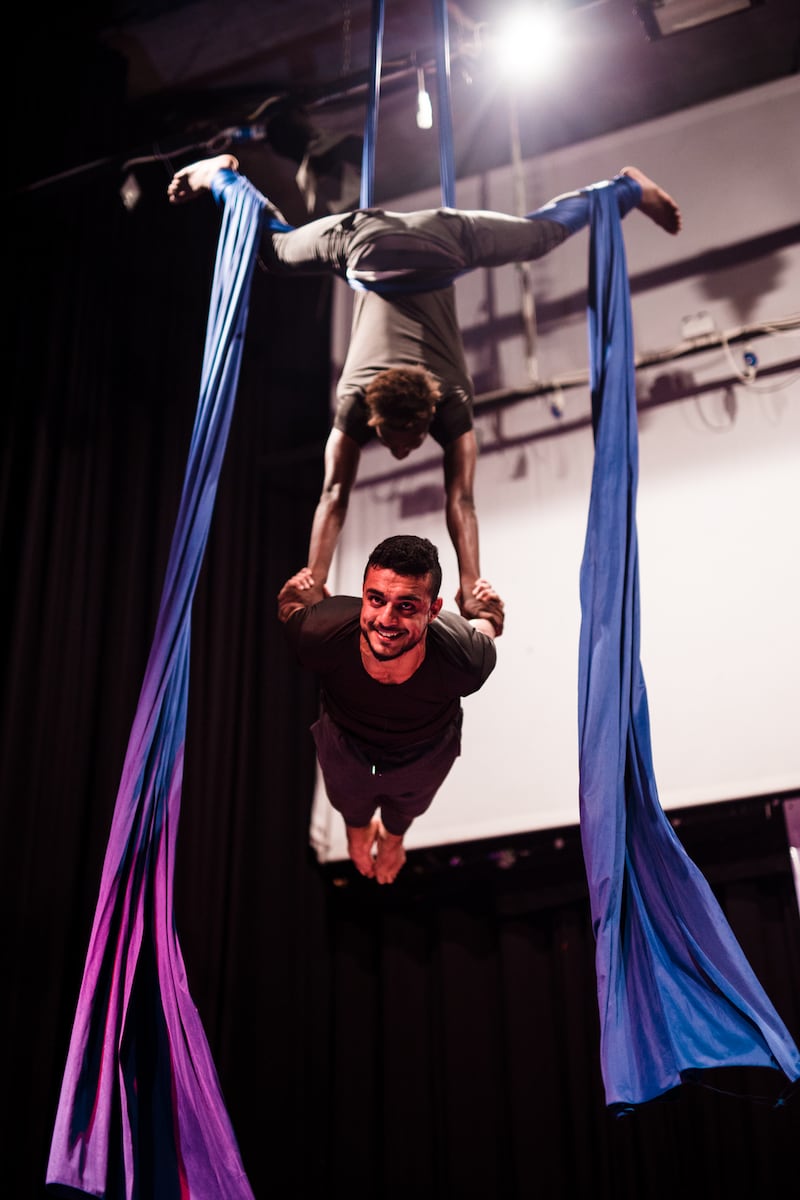
Marquez Courtney is wearing a homage to her parents’ profession around her neck: a large necklace made of moveable parts, with two little figures on trapezes swooping towards each other, their hands extended.
The family travelled around Mexico and the US with different circuses, but her parents broke up when Marquez Courtney and her younger sister were small.
Carol returned to Ireland and the family circus with the girls and took on various roles, including ring mistress and wardrobe mistress, sewing sparkly costumes. Marquez Courtney began performing as a child. “There is this strong tradition within circuses for kids to start training very early, so I would have been on trapeze from the age of four or five. I used to go into the ring dressed as a clown when I was six or so.”
She went away to school but every holiday, “I’d go home and work in the circus. When we came back to Ireland, it was very much a family business dynamic, so no different from if your family owned a B and B or a shop, you just did whatever needed to be done.”
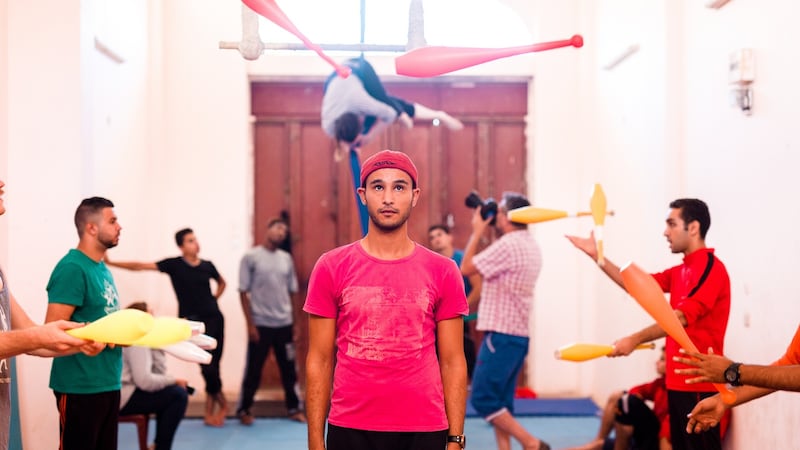
Whatever needed to be done ranged from learning a Russian dance routine to standing in the middle of a motorcycle wall of death: “They’re spinning around over your head but, to be honest, you really don’t notice it when you’re actually in there,” she says cheerily.
Marquez Courtney stopped performing in her early 20s. “I was always very much the nerd of the circus family; with my books and gadgets. I was the first to go to college and the first to leave the show.”
She studied English and Spanish in UCD. "The joke in the family is that I ran away from the circus." For a number of years, she was the editor of Image Interiors and Living, and now works for a start up. She is also a photographer, which is how Jenny Higgins heard about her.
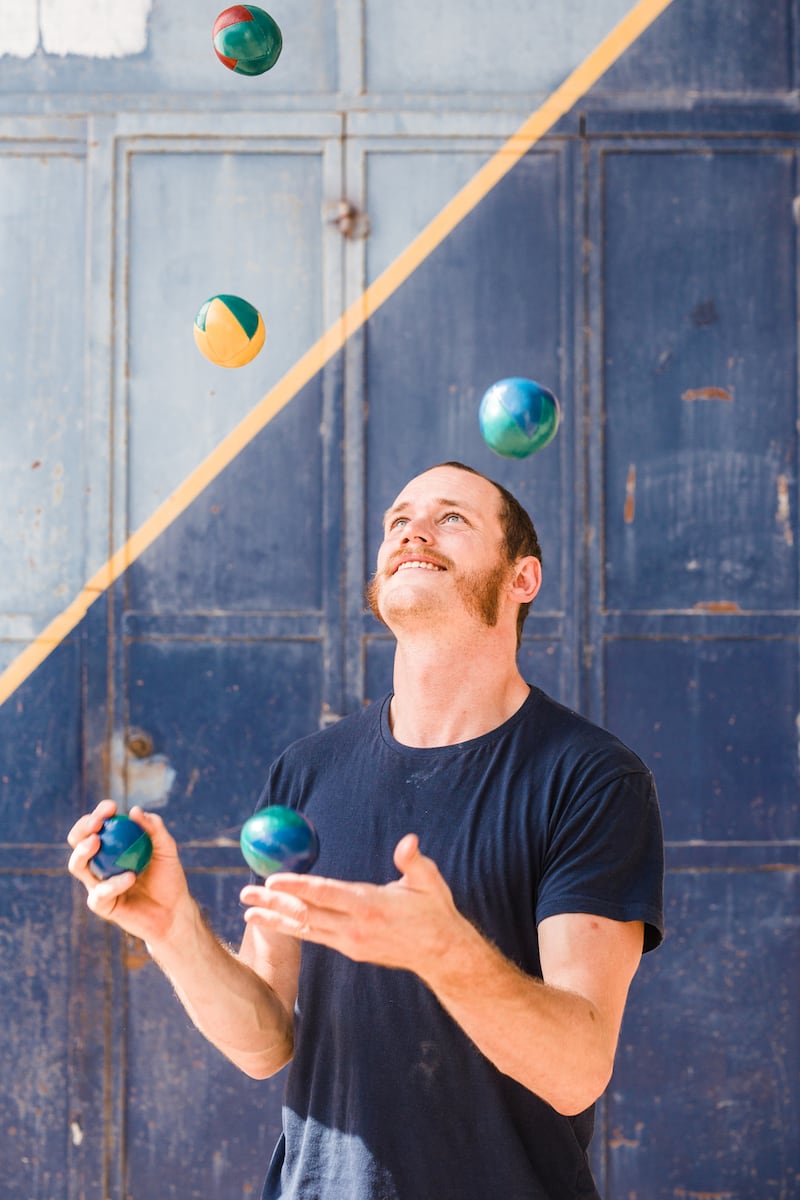
“We needed a photographer to document the circus school we were going to run in Gaza for a week,” she explains.
Sailing from Sweden
Dubliner Higgins did not grow up in a circus. She was a mature student in UCC, and seeking friends outside the immediate university social circle. “I’d done all that drinking thing when I was younger,” as she puts it.
She signed up with a circus school in Cork and tried aerial, which includes trapeze work and silks; where performers wrap themselves in fabric and tumble down as it unfolds. “It’s one of the most fun ways you can get fit,” says Higgins.
She studied politics and did a masters in human rights, going on to do an internship at the United Nations in Geneva, worked with the Department of Foreign Affairs in their Middle East and North Africa unit, and then at Trócaire. All the while, she continued her circus training, including teaching aerial and acrobatic work at Taking Flight in the Chocolate Factory.
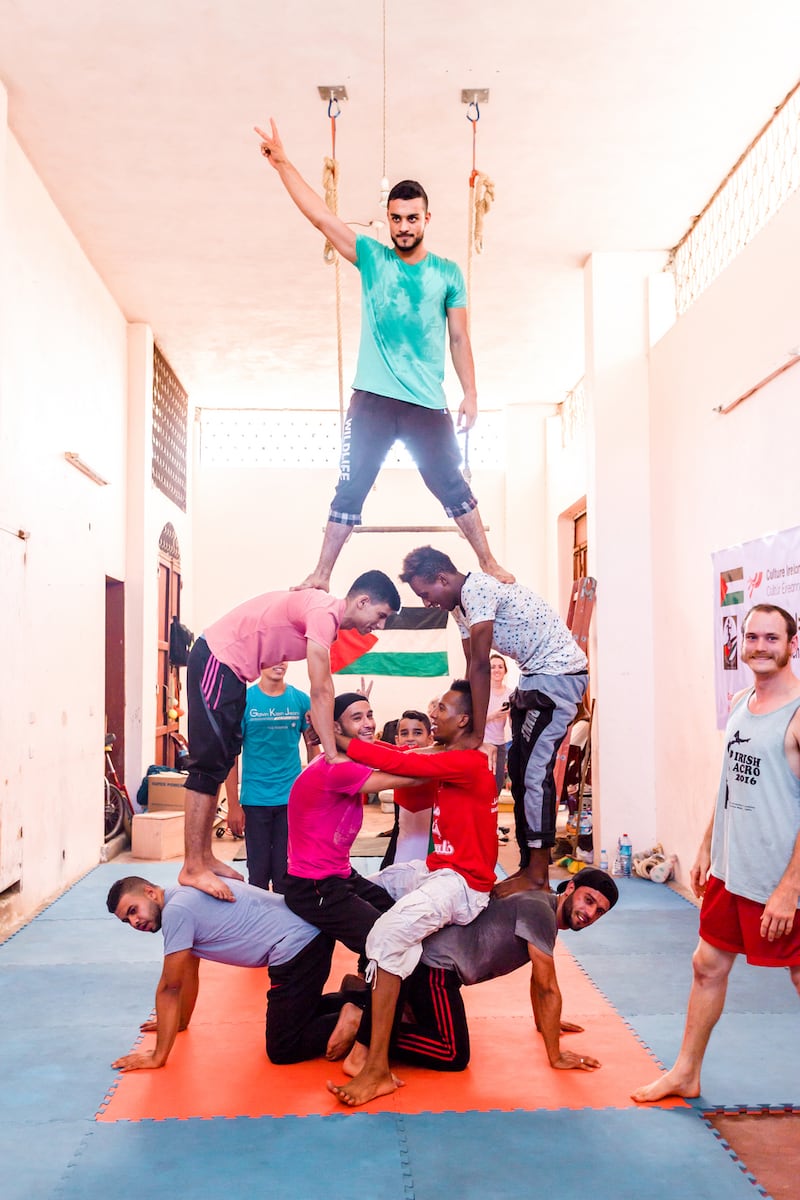
It was when she went to Gaza on a work trip, that she began to think about giving circus classes there. She kept in contact with a fixer she had met there, Skyping in an attempt to learn some Arabic. “One evening, he sent me picture of people doing circus in Gaza.”
In March 2016, Higgins went to Shane Holohan, who runs Taking Flight, and asked if he would be interested in supporting an application to Culture Ireland for funding to take circus training to Gaza. "I thought we had a really unique opportunity, and work said they would help with permits," she says. (It is usually difficult for private foreign citizens to enter Gaza.) Holohan agreed, and the application for travel funding from Culture Ireland was put in by Taking Flight, with Higgins as project manager.
Before funding was granted, Higgins began to think about what she wanted to do in Gaza. While she knew aerial work, she wanted to offer a variety of skills. A friend told her about Henrik Gard, who does acrobatics, juggling and clowning.
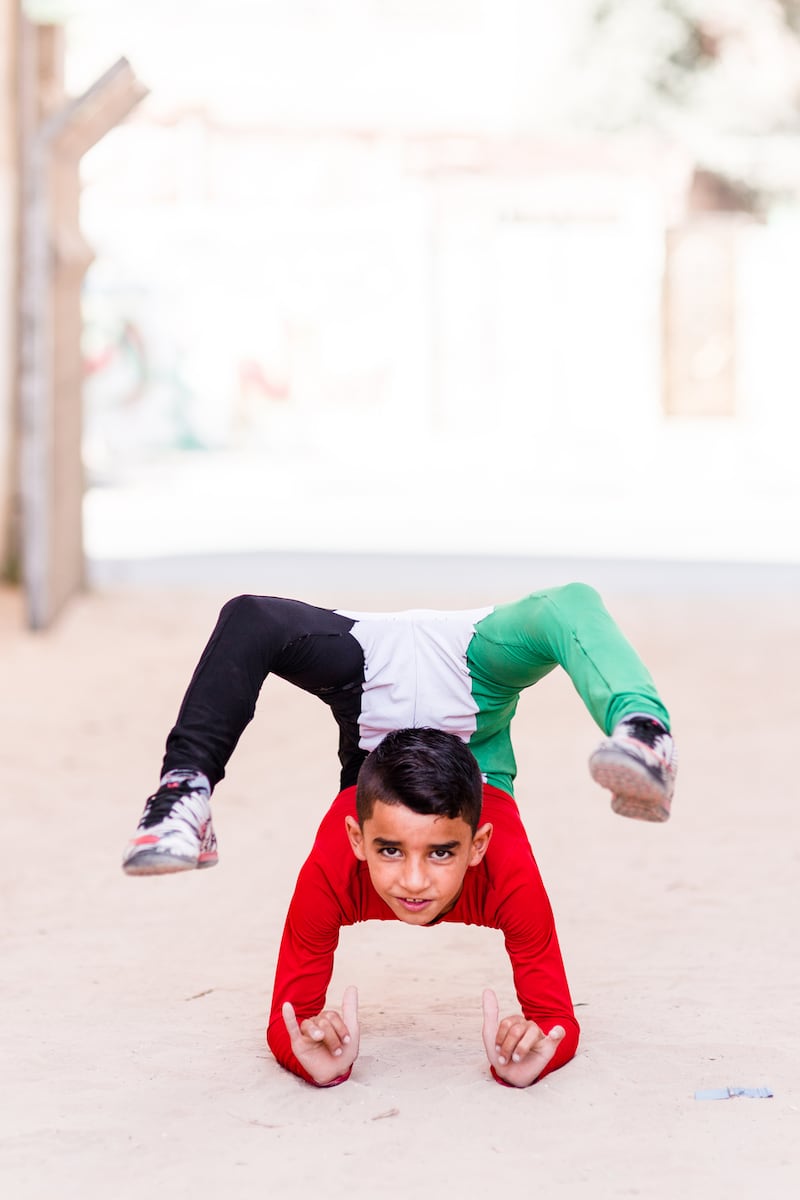
"So we got in touch through Facebook," says Gard, who arrived in Ireland from Sweden three years ago in his own 27ft boat, Tintomara, which he lives on in a Dublin marina.
“It means red sea in Spanish,” he says. “Then I found out that “mara” is also Irish for sea.” He bought his boat by saving from a courier job.
Before he came to Ireland, Gard spent some years roaming. “I was out travelling around the world, hitching rides on boats and in trucks.” He got a passage on a boat sailing across the Atlantic, and then hitch-hiked across the US. “Or wherever there was land where I was,” as he puts it. He funded his travels through street performances: juggling and clowning. “Way back when I was a kid, I was a gymnast,” says Gard (29). His grandfather had been an acrobat and a sailor, so it runs in the family.
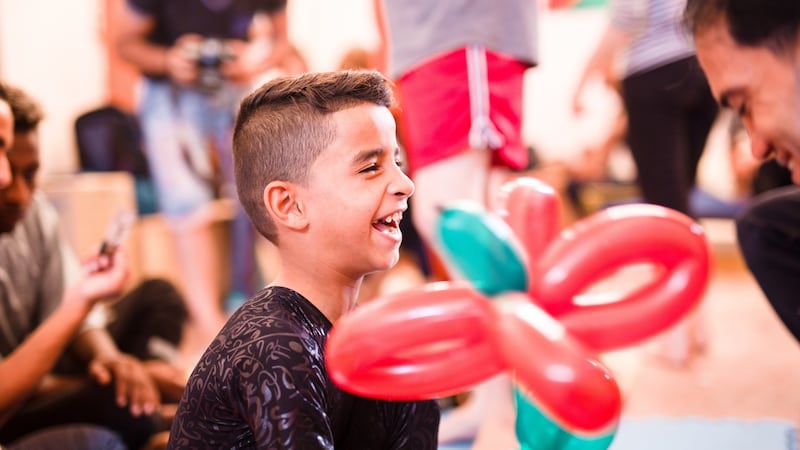
Clowns Without Borders
“I travelled from Vietnam back to Sweden on the money I made from street performing.” He also spent three months in China, then travelled in Russia and Finland and made his way back to Gothenburg. When he had had enough of being home, he set sail south, and eventually arrived in Dublin. “I’d never been in Ireland before.”
Gard turned to the international community he knew, circus, to connect him with the wider city. He now teaches and performs at festivals and corporate events. One recent Dublin Fringe Festival show, The Way of the Coconut, was held on his boat.
When Higgins asked Gard if he would be interested in coming with her to Gaza he replied: “As long as it doesn’t clash with my trip to Iraq with Clowns Without Borders,” she recounts. Where are those waiters when you want to see falling crockery?
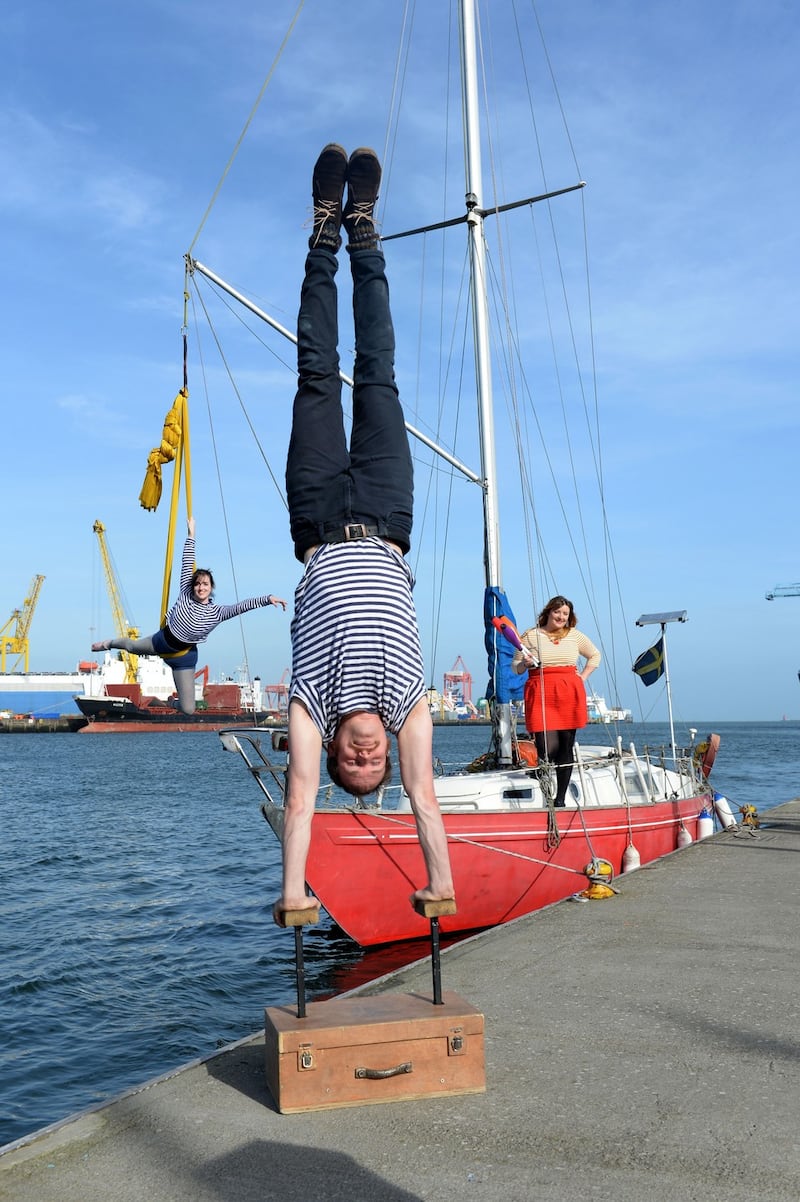
They decided to offer a week of training, create a show with the people they had trained, and put it on in Gaza. “I thought it would be great if we could bring a photographer to document it,” Higgins says. Through word of mouth, she found Marquez Courtney.
Their proposed project, Taking Flight in Gaza, was successful in receiving funding from Culture Ireland. Before departing, they did a fundraiser so that they could bring out equipment with them, raising €2,500. “We bought juggling balls, clown noses, clubs, a mini clown bike.” In total, the trio brought over 62 kilos of equipment with them into Gaza, sharing the load.
Higgins also asked the circus community for donations, and Fidget Feet Aerial Dance gave them a trapeze, which Marquez Courtney put in her suitcase. Between the mini clown bike and the trapeze, airport security must have been puzzled that day by the nature of the luggage the trio were carrying.
They were in Gaza for a week, and trained 15 people, all men. Higgins taught aerial, and Gard taught acrobatics, handstands, juggling, and break-dancing. All the training was via Arabic, with a translator. The final two days were spent choreographing and rehearsing for a show.
The fixer Higgins previously met in Gaza put the word out in the community, and 400 people came to the free 90-minute show.

“We had to turn people away,” Higgins says. “There were air strikes 10 kilometres away on the night when the show was going on. It took people’s minds off it, hopefully. It’s such a simple but important thing; to be able to make people laugh.”
They filmed the show, and Marquez Courtney also documented the week’s training in photography. When they came back to Ireland, they left all the equipment behind. Since then, the Gaza performers have been hired and paid to do the same show three times. Higgins now hopes to return and do the same training with a group of women.
“I promised them I would go back,” she says.













